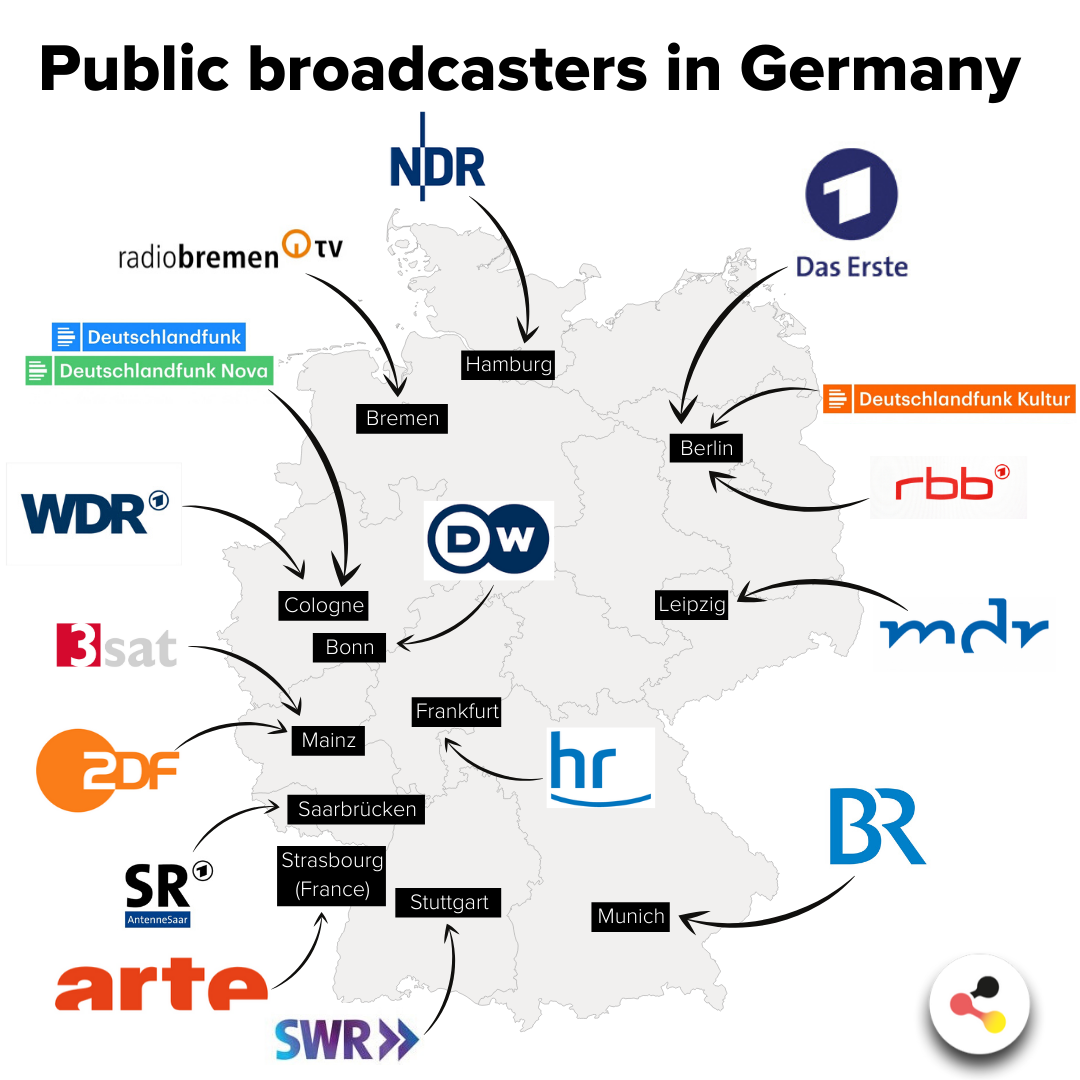Diversity is its mandate
High quality and a very varied remit: how public service broadcasting functions in Germany.

There are two different types of broadcaster in Germany. On the one hand there are television and radio broadcasters that belong to private companies and are financed by subscriptions and advertising revenue. And on the other there are the public service broadcasters that derive their funding partly from compulsory contributions from all households in Germany and partly from advertising. They include the TV broadcasters of ARD, an association of several regional broadcasting institutions that was founded on 9 June 1950. The international broadcaster Deutsche Welle belongs to ARD, as do ZDF and Deutschlandradio.
A mandate to shape public opinion
Part of the remit of the public service broadcasters is to provide comprehensive, multifaceted and objective reporting on political and social issues. This is intended to help all citizens to form their own opinion about a wide range of topics. The broadcasters provide a basic level of information for the general public, remaining politically and economically independent.
Dieses YouTube-Video kann in einem neuen Tab abgespielt werden
YouTube öffnenThird party content
We use YouTube to embed content that may collect data about your activity. Please review the details and accept the service to see this content.
Open consent formThe licence fee
To ensure that this remains the case, people in Germany are required to pay a licence fee. The public service media receive 17.50 euros per month from every household, helping to keep them independent of private companies and of political influence by the state.
The BBC: a role model for German broadcasting
Public service broadcasters are to be found in many European countries. One of the oldest is the BBC in the UK. It served as the role model when the Western Allies established public service broadcasting in Germany after the Second World War. It was not until the 1980s that these broadcasters faced competition from commercial stations. The Interstate Broadcasting Agreement requires all broadcasters in Germany to ensure the “free individual shaping of public opinion and the plurality of opinion.”

High viewing figures for public service broadcasters
To this day, the public service broadcasters are among Germany’s most popular stations. No news programme in Germany attracts as many viewers as the ARD’s Tagesschau, which airs every evening at 8 pm. In 2019, an average of 9.8 million people watched this evening news broadcast. Especially during the corona crisis it is noticeable that the reliable information provided by public service stations are in particular demand – even among younger viewers. Surveys show that this target group gives the credibility of the broadcasters a particularly high rating of just shy of 70 percent, which significantly exceeds the figure they give reporting in print media (42 percent), private broadcasters (23 percent) and above all social media (7 percent).



